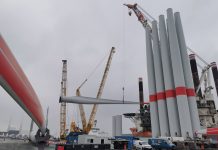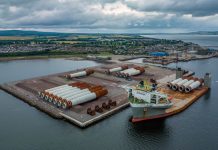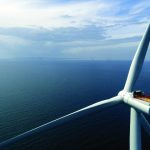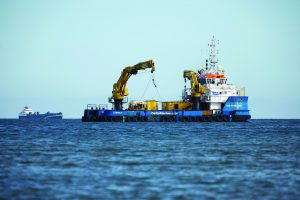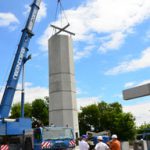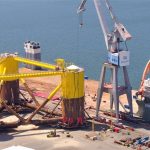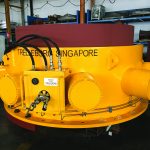Offshore wind energy plays an important role in making Dutch energy supply more sustainable and achieving climate objectives. The 2030 Offshore Wind Energy Roadmap provides a blueprint on how and where new wind farms will be built in the period up to and including 2030. But what role will offshore wind energy play in the period after that? And under which conditions can offshore wind energy help to increase sustainability in the 2030-2050 period? The North Sea Energy Outlook (NEO) provides a scientifically based overview of the possibilities for using the North Sea to increase sustainability after 2030, while providing insight into opportunities for further growth of offshore wind energy and its consequences for the national energy system. The report was drawn up by DNV GL on behalf of the Ministry of Economic Affairs and Climate Policy.
About 70 percent of current electricity consumption is expected to come from wind and solar energy in 2030, more than half of which will be produced by offshore wind farms. The NEO concludes that due to its potential for wind-energy development and CO2 storage, the North Sea is also indispensable when it comes to achieving the climate target of a 95 percent reduction in CO2 emissions by 2050. Wind energy will have to grow significantly after 2030 to achieve that target. If offshore wind energy is to grow successfully after 2030, however, the right preconditions must be met.
Energy system integration
One important precondition for the growth of offshore wind energy after 2030 is the electricity generated must be properly integrated into the energy system. This means the required infrastructure (such as cables and substations must be available in good time. It is therefore important for the spatial planning of wind farms that the landfall and land-based infrastructure to be properly coordinated. This is why an analysis of landfall options for offshore wind 2030-2040 (the ‘VAWOZ’ project) was scheduled to start December 9.

This project forms the link between the North Sea 2022-2027 program, which focuses on marine spatial planning and the National Energy Network Program, which focuses on the spatial planning for the main energy system on land. New areas for offshore wind energy will be designated (in line with the agreements from the North Sea Agreement) after careful consideration of all interests in the North Sea in the North Sea 2022-2027 program. An integral part of this assessment includes carrying out an environmental impact assessment (EIA Plan) and incorporating the results from the Offshore Wind Ecological Program (WOZEP).
Sufficient Demand
The NEO also states the market will only be willing to make ongoing and scaled-up investments if there is a healthy and stable business case for sustainable energy producers. In concrete terms, this means more insight is required into the development of demand for renewable electricity and green hydrogen, and this demand must increase in good time. A significant part of the expected demand will be due to sustainability improvements being made in the industry. The European Emissions Trading System (ETS), minimum CO2 price, and National Sustainable Industry Infrastructure Program (PIDI) are initiatives designed to encourage industry to invest in sustainability. In addition, in response to the recommendation of the Industry Climate Agreement Infrastructure Task Force (TIKI), the government has announced an Electrification Roadmap (technology outlook) to be published in early 2021, which should provide more insight into the demand for green electricity from industry.
The approach to the rollout of new wind farms will be updated so the energy generated at sea can be linked to expected demand. Stakeholders will be involved in the development of this new approach and relevant insights will be used, including those from the Guidehouse report on integrated tenders for offshore wind energy and hydrogen production. The North Sea Energy Outlook by DNV-GL and the study into combined offshore wind and hydrogen production by Guidehouse are appendices to the letter to parliament about the NEO.
More info english.rvo.nl/topics/ sustainability/offshore-wind-energy
















